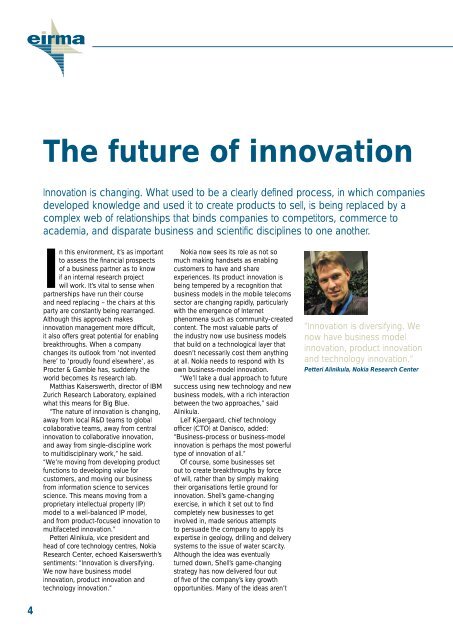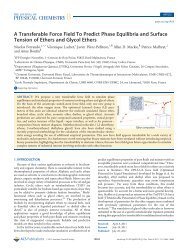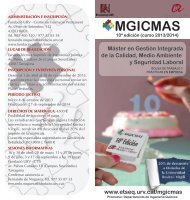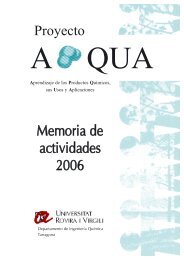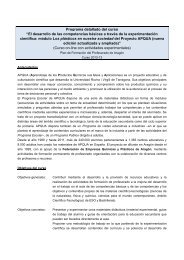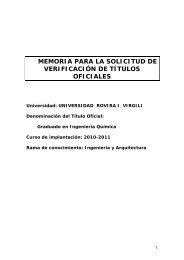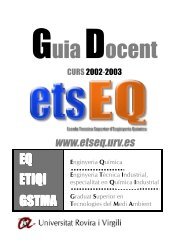The future of innovation - etsEQ
The future of innovation - etsEQ
The future of innovation - etsEQ
You also want an ePaper? Increase the reach of your titles
YUMPU automatically turns print PDFs into web optimized ePapers that Google loves.
4<br />
<strong>The</strong> <strong>future</strong> <strong>of</strong> <strong>innovation</strong><br />
Innovation is changing. What used to be a clearly defi ned process, in which companies<br />
developed knowledge and used it to create products to sell, is being replaced by a<br />
complex web <strong>of</strong> relationships that binds companies to competitors, commerce to<br />
academia, and disparate business and scientifi c disciplines to one another.<br />
In this environment, it’s as important<br />
to assess the fi nancial prospects<br />
<strong>of</strong> a business partner as to know<br />
if an internal research project<br />
will work. It’s vital to sense when<br />
partnerships have run their course<br />
and need replacing – the chairs at this<br />
party are constantly being rearranged.<br />
Although this approach makes<br />
<strong>innovation</strong> management more diffi cult,<br />
it also <strong>of</strong>fers great potential for enabling<br />
breakthroughs. When a company<br />
changes its outlook from ‘not invented<br />
here’ to ‘proudly found elsewhere’, as<br />
Procter & Gamble has, suddenly the<br />
world becomes its research lab.<br />
Matthias Kaiserswerth, director <strong>of</strong> IBM<br />
Zurich Research Laboratory, explained<br />
what this means for Big Blue.<br />
“<strong>The</strong> nature <strong>of</strong> <strong>innovation</strong> is changing,<br />
away from local R&D teams to global<br />
collaborative teams, away from central<br />
<strong>innovation</strong> to collaborative <strong>innovation</strong>,<br />
and away from single-discipline work<br />
to multidisciplinary work,” he said.<br />
“We’re moving from developing product<br />
functions to developing value for<br />
customers, and moving our business<br />
from information science to services<br />
science. This means moving from a<br />
proprietary intellectual property (IP)<br />
model to a well-balanced IP model,<br />
and from product-focused <strong>innovation</strong> to<br />
multifaceted <strong>innovation</strong>.”<br />
Petteri Alinikula, vice president and<br />
head <strong>of</strong> core technology centres, Nokia<br />
Research Center, echoed Kaiserswerth’s<br />
sentiments: “Innovation is diversifying.<br />
We now have business model<br />
<strong>innovation</strong>, product <strong>innovation</strong> and<br />
technology <strong>innovation</strong>.”<br />
Nokia now sees its role as not so<br />
much making handsets as enabling<br />
customers to have and share<br />
experiences. Its product <strong>innovation</strong> is<br />
being tempered by a recognition that<br />
business models in the mobile telecoms<br />
sector are changing rapidly, particularly<br />
with the emergence <strong>of</strong> Internet<br />
phenomena such as community-created<br />
content. <strong>The</strong> most valuable parts <strong>of</strong><br />
the industry now use business models<br />
that build on a technological layer that<br />
doesn’t necessarily cost them anything<br />
at all. Nokia needs to respond with its<br />
own business-model <strong>innovation</strong>.<br />
“We’ll take a dual approach to <strong>future</strong><br />
success using new technology and new<br />
business models, with a rich interaction<br />
between the two approaches,” said<br />
Alinikula.<br />
Leif Kjaergaard, chief technology<br />
<strong>of</strong>fi cer (CTO) at Danisco, added:<br />
“Business-process or business-model<br />
<strong>innovation</strong> is perhaps the most powerful<br />
type <strong>of</strong> <strong>innovation</strong> <strong>of</strong> all.”<br />
Of course, some businesses set<br />
out to create breakthroughs by force<br />
<strong>of</strong> will, rather than by simply making<br />
their organisations fertile ground for<br />
<strong>innovation</strong>. Shell’s game-changing<br />
exercise, in which it set out to fi nd<br />
completely new businesses to get<br />
involved in, made serious attempts<br />
to persuade the company to apply its<br />
expertise in geology, drilling and delivery<br />
systems to the issue <strong>of</strong> water scarcity.<br />
Although the idea was eventually<br />
turned down, Shell’s game-changing<br />
strategy has now delivered four out<br />
<strong>of</strong> fi ve <strong>of</strong> the company’s key growth<br />
opportunities. Many <strong>of</strong> the ideas aren’t<br />
“Innovation is diversifying. We<br />
now have business model<br />
<strong>innovation</strong>, product <strong>innovation</strong><br />
and technology <strong>innovation</strong>.”<br />
Petteri Alinikula, Nokia Research Center


